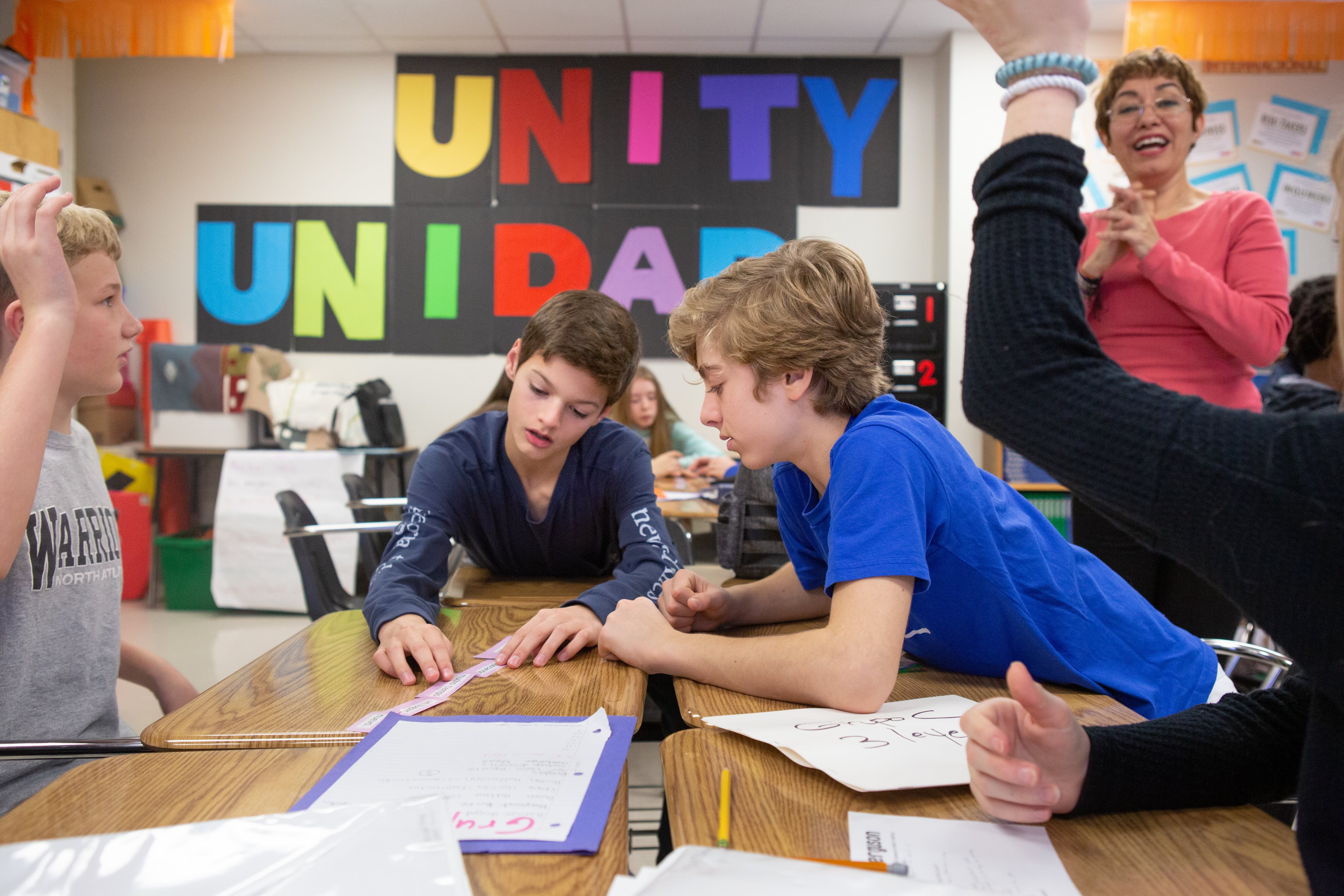While sitting next to her mom on Zoom, 9-year-old Lexie paused, then shook her head no after being asked if she ever heard the term LGBTQ from her teachers in class. Her mother, Stephanie Citron, intervened.
“So, me and mom are LGBTQ, because we’re two women that live together,” Citron told Lexie, referring to her wife of eight years, Elizabeth Gardiner. She was one of several readers interviewed by Chalkbeat who shared their insight on the importance of diversity in the books available to children and teens and suggested ways for teachers to be more inclusive of students’ identities.
Citron said she hopes these conversations will become more commonplace in classrooms. Lexie attends a Michigan public school that Citron said acknowledges and welcomes people who identify as LGBTQ.
Across the nation, some states are seeking restrictions on the education of LGBTQ issues below sixth grade, in addition to passing laws that prohibit gender-affirming care. Other proposals include bans on books that feature LGBTQ+ “lifestyles.”
Here’s what Chalkbeat readers said teachers can do to create safe spaces for students.
Use diverse literature to build inclusive environments
Some readers who wrote to Chalkbeat said an inclusive community is best achieved in the classroom by incorporating stories that are reflective of the student body and that allow students to empathize with each other’s identities.
“It’s important to have books that are diverse, not only for students who identify with the characters they’re reading about, but also for people to be able to read and open their own minds to new perspectives,” said Lindsay Klemas, a high school librarian at Forest Hills High School in Queens, New York. “That’s another way of building empathy and seeing how other people might be struggling.”
Julia Cohen, a high school teacher at NEST+M in New York City, emphasized that lessons don’t have to be dedicated to an entire book.
“Even if you don’t get to a whole book that reflects a student’s background, I think that even just acknowledging a component, or delving into it even briefly for a day; or delving into a component of a student’s identity will make them feel seen and make them honor the class even more throughout the year,” Cohen said.
In 2022, 45% of LGBTQ youth considered attempting suicide this past year, but this rate was significantly lower among LGBTQ teens who said they felt supported from their families and communities, according to The Trevor Project, an organization dedicated to suicide prevention by providing crisis support services for LGBTQIA+ youth.
Diverse and inclusive literature that helps students feel seen can “literally save someone’s life,” said Rick Joseph, a fifth and sixth grade language arts teacher in Detroit.
“The ability for a student, for a person to relate and read a story about someone who has gone through an experience like their own is life-changing.”
Seek out training and student perspective
Most teachers feel they have a responsibility to support their students academically and socially, Joseph said, but not all receive the right training on how to support students emotionally.
“It’s really difficult to navigate a higher level critical conversation, especially when it’s about a sensitive topic such as sexuality and gender,” said Cohen. “I don’t say ‘sensitive,’ because that bothers people. I say it because 16-year-olds that I’m teaching are trying to figure out what their gender is. That’s why it’s sensitive.”
Since gender and sexuality are topics that many students and families struggle with discussing, teachers should be prepared to have private conversations that will help teenagers work through their identity growth.
“What are all the questions and things that you think kids might say to you, to each other, to a kid who looks gender nonconforming, to a kid who’s wearing the clothes of a gender that you don’t think they were assigned at birth, to kids who have two moms or two dads,” said Friedman. “You need to practice what you’re going to say in those situations, because if you don’t have language ready, you say nothing and that’s really bad.”
Klemas agrees, and added teachers should be seeking out students’ thoughts and opinions as well.
“The only reason I know so much about LGBTQ issues is from speaking with students all day at work,” she said.
As teachers, listening to students is an important way to show your support and care, said Joseph. “At the end of the day, we’re there for students.”
Additionally, an inclusive school community is encouraged for all students, as well as all teachers.
“I didn’t really see anyone like me growing up as an adult and that would’ve changed everything,” said Kade Friedman, an educator at New York University and advocate for diverse and inclusive classrooms. It’s special and encouraging “for kids now to see queer and trans teachers who are out and also celebrated by their staff, who don’t have to hide it.”
Elena Johnson is Chalkbeat’s 2022 Community Listening and Engagement Intern.







